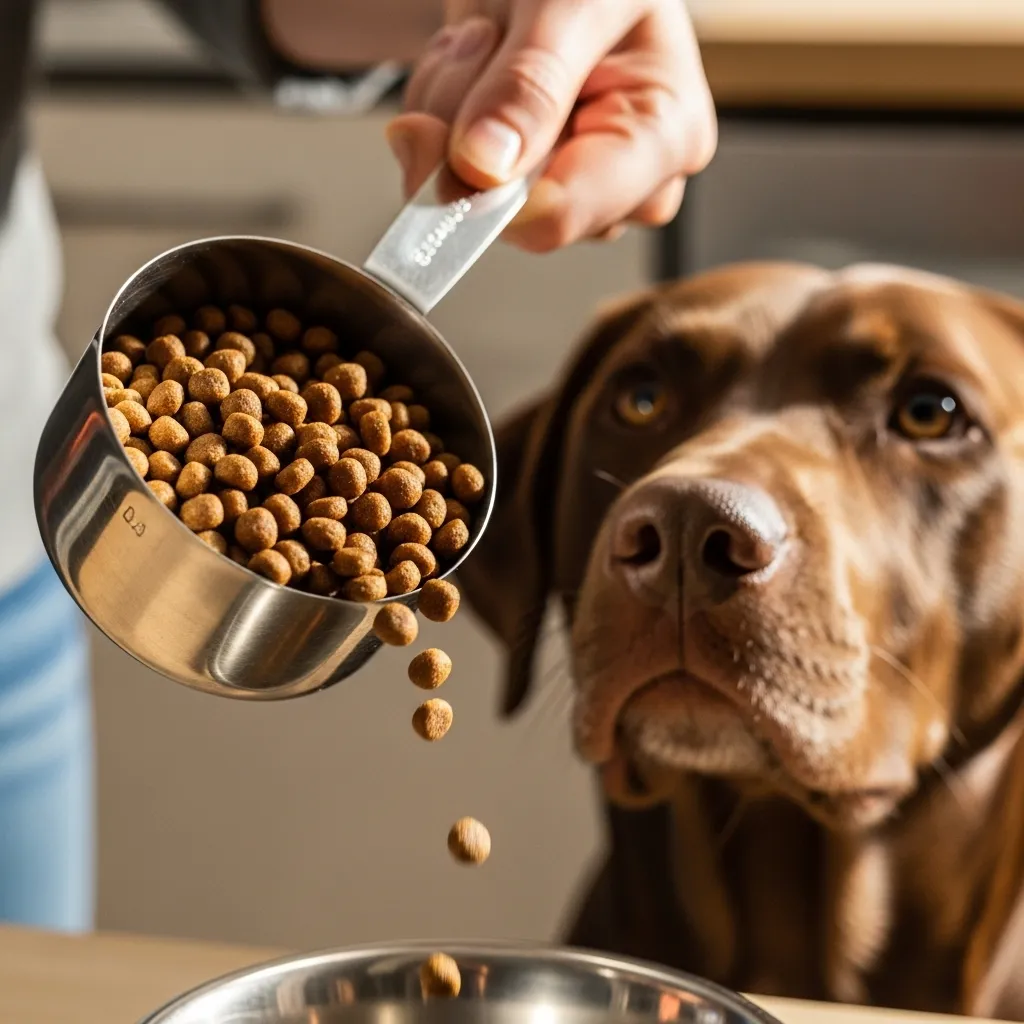
Beyond Genetics: Lifestyle Factors That Impact Every Dog’s Health
Genetics load the gun, but environment pulls the trigger. While we cannot change a dog’s DNA, we have enormous control over the lifestyle factors that shape their daily health and well-being. These elements are just as important as a dog’s ancestry.
Nutrition
A balanced, high-quality diet is the foundation of good health. The most important nutritional rule is portion control. Use a standard 8-ounce measuring cup, not a random scoop, to measure your dog’s meals. Follow the guidelines on the food bag as a starting point, but adjust based on your dog’s individual metabolism and BCS. Treats should make up no more than 10% of your dog’s total daily caloric intake. For dogs with specific health issues, a veterinarian can recommend a therapeutic diet.
Exercise and Enrichment
All dogs need daily physical activity to maintain muscle tone, joint health, and a healthy weight. The amount and type of exercise will vary by breed and age. However, mental exercise, often called enrichment, is equally vital for preventing boredom and behavioral problems. Simple activities can make a huge difference.
Worked Example: A Weekly Enrichment Plan. Aim for 15 minutes of dedicated enrichment each day.
- Monday: Use a puzzle feeder or snuffle mat for breakfast instead of a bowl.
- Tuesday: Practice 10 minutes of positive reinforcement training. Teach a simple trick like “touch” (having your dog touch their nose to your hand).
- Wednesday: Play a game of “Find It.” Have your dog wait in another room while you hide a few high-value treats, then release them to use their nose to find them.
- Thursday: Give your dog a frozen treat, like plain yogurt or low-sodium broth frozen in a Kong toy.
- Friday: Go for a “sniffari” walk, letting your dog lead the way and sniff as much as they want.
Grooming and Husbandry
Basic maintenance is a form of preventive healthcare. Regular brushing removes dead hair and prevents painful mats, especially in long-coated breeds. Nail trims every 4-6 weeks prevent discomfort and structural issues. Regular ear checks and cleaning (if needed) can ward off infections. Daily tooth brushing is the gold standard for preventing painful dental disease, a common problem in all dogs.
Safety and Veterinary Partnership
A safe home environment is crucial. Be aware of common household dangers and keep toxic substances out of reach. According to the ASPCA Animal Poison Control, common toxins include chocolate, xylitol (a sugar substitute), grapes, and many household plants. It’s also vital to know the signs of a true emergency. Seek immediate veterinary care for symptoms like difficulty breathing, pale gums, sudden collapse, seizures, or unproductive retching (which can be a sign of life-threatening bloat).















